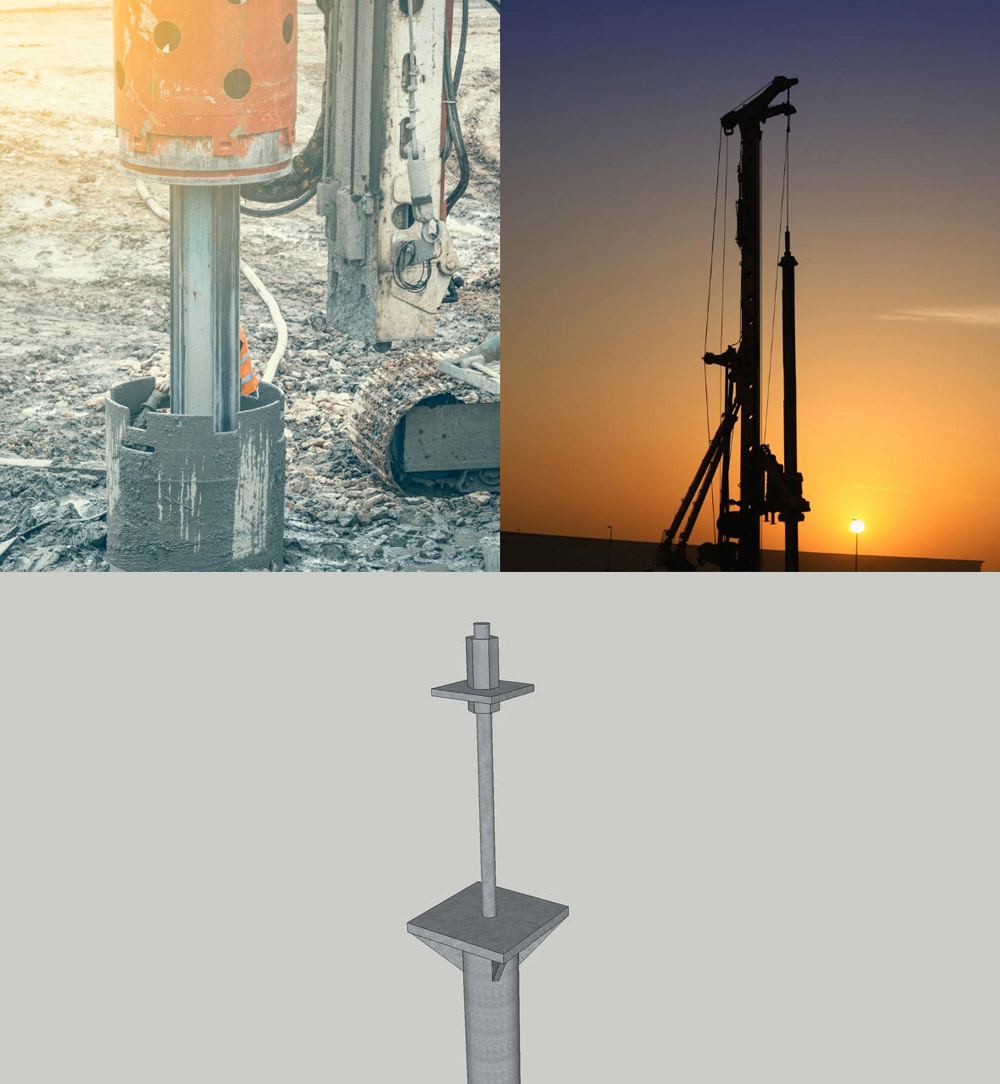Micropiles are small diameter, bored cast-in-place piles, with most of the applied load being resisted by steel reinforcement. They are constructed by drilling a borehole, often using casing, then placing steel reinforcement and grouting the hole. Micropiles have a wide range of uses and are becoming a more mainstream method of supporting and resupporting foundations, seismic retrofits, stabilization of slopes and even earth retention.
Micropiles are usually designed in small clusters or groups with each typically carrying an equal amount of load. These piles may also be designed with a batter to improve the lateral rigidity of the group. They can be designed to resist a combination of compression, tension and lateral forces.
Micropiles are an ideal pile for complex sites where low vibration or low noise levels are required, or where limited access such as low headroom and drilling is difficult. Other site conditions that make micropiles attractive are: obstructions, large cobbles or boulders, nearby sensitive structures, karst topography or high groundwater conditions. The unique characteristics of micropiles make them a perfect solution when other deep foundation methods are not suitable.

Thread Bars: Micropiles
Micropiles produced with thread bars have been well proven and are widely accepted in china project.
In collapsing soils, the use of thread bars to produce micropiles is ideal. Where open hole drilling may be limited in depth or temporary casing is required, thread bars offer a single step process of grouting and reinforcing. In addition, higher values of ground to grout bond have resulted from the use of this method. The smaller, and often less expensive equipment, used with the hollow bar system allows for lower project costs and makes it easier for less specialized general contractors to use. This system is also perfect in sites with limited access or low headroom.
Yidao Threaded Micropile Systems
● Typically installed with a small-bore drilling rig using a duplex drilling method with drill rod and drill bits or a down-hole hammer. Uses a crossover/saver sub to attach the “starter” piece with welded J-teeth or a Ring Bit, on the bottom, with Male x Female (Pin x Box) extension pieces, as needed
● Depending on the type of Micropile constructed, the capacity is developed through skin friction (the bond between grout and soil), bearing conditions and the strength of the casing/bar
● Steel casing may extend the full depth of the pile or end at the top of the bond zone
● Increase capacities thru grout methods (pressure vs gravity), size and strength of casing/bar
● Corrosion Protection
● Bare Bar (SCP) Compression Piles
● Grout Thickness & High pH of Grout help passivate steel
● Encapsulated (DCP) Tension Piles
● Corrugated Sheath helps as water/moisture barrier








